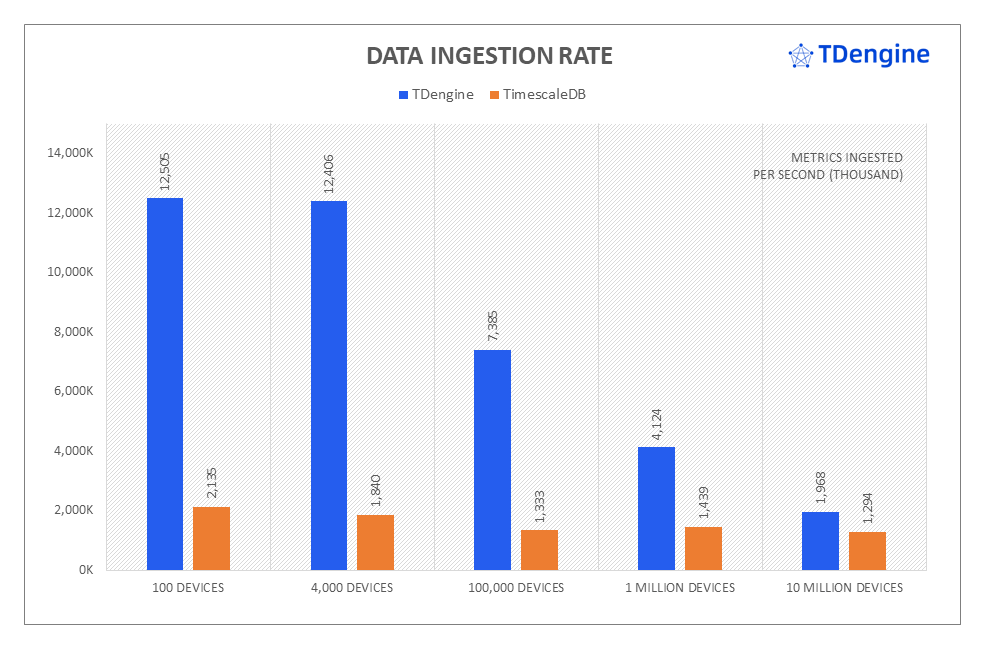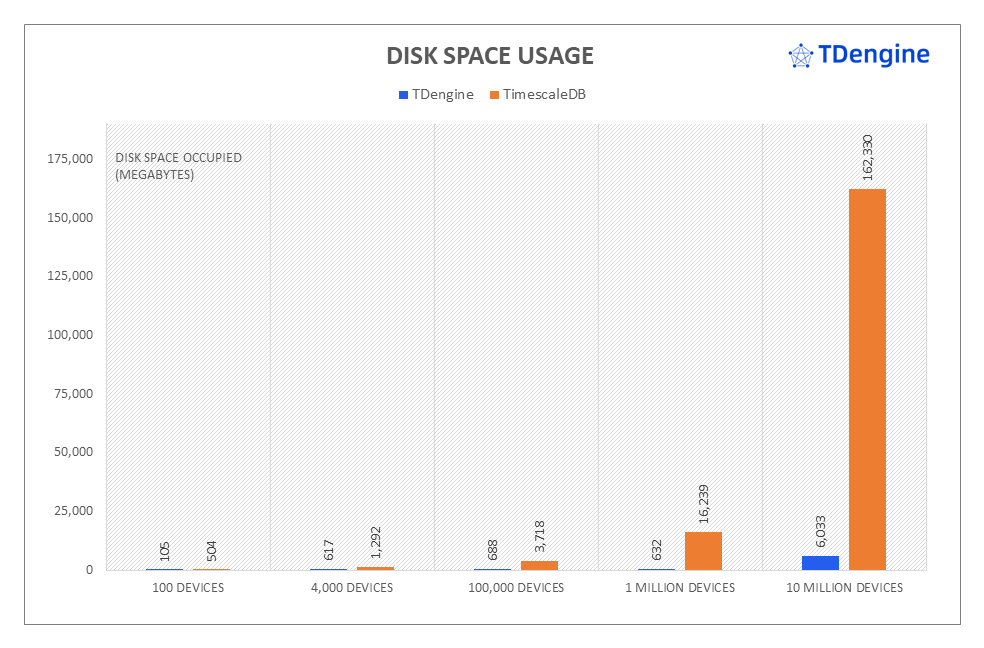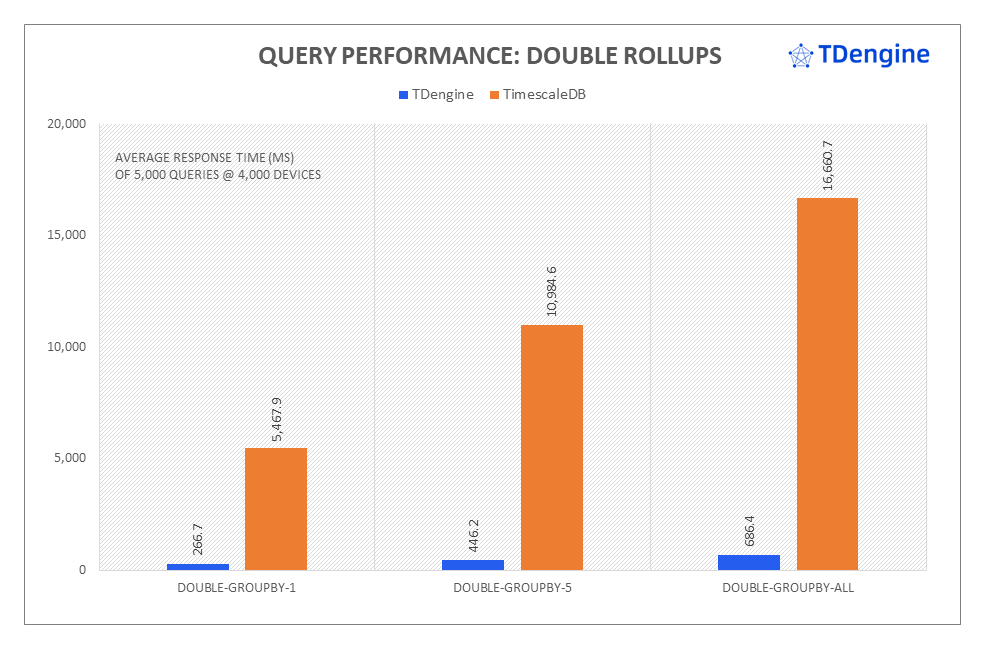This article compares two popular time-series database (TSDB) products – TimescaleDB vs. TDengine – to help you determine which is right for your use case. With industries ranging from IoT to manufacturing generating and collecting a constantly increasing amount of time-series data, the growth of the time series DBMS market over the past five years has not come as a surprise. This popularity has resulted in a large number of time series DB solutions coming on the market, sometimes making it difficult to choose the best time series database for a certain business scenario.
TimescaleDB is an open-source time-series database based on PostgreSQL. Its major advantage is that it offers modern flexibility on top of a traditional relational database model, plus the benefits of PostgreSQL. However, historically its storage and compression have been less than optimal, which can affect performance as well as hardware costs. TDengine is also an open-source time-series database that differentiates itself with high performance, a distributed cloud-native architecture, and built-in caching, data subscription, and stream processing that simplify the overall system design.
The following table compares the basic information of TimescaleDB vs. TDengine. We can see that the two systems have much in common.
Basic Info: TimescaleDB vs. TDengine
| TimescaleDB | TDengine | |
|---|---|---|
| Creator | Timescale | TDengine |
| Initial release | 2017 | 2017 |
| Main development language | C | C |
| Main query language | Standard SQL (based on PostgreSQL) | Standard SQL |
| License | Apache | AGPL |
| Operating systems | Linux, macOS, and Windows | Linux, macOS, and Windows |
Performance Comparison
Performance is one of the main factors by which time-series databases are compared. Higher performance means more than just faster operations – it also reduces the total cost of ownership for your time-series data operations as fewer hardware resources are required.
According to a performance comparison of TimescaleDB vs. TDengine, conducted based on the open-source TSBS framework, TDengine significantly outperforms TimescaleDB in all key areas – data ingestion rate, query response time, and disk space usage – while using fewer server-side resources.


As shown in the figures, TDengine provided superior ingestion performance in all scenarios, writing the TSBS data 1.5x to 6.7x faster than TimescaleDB. TimescaleDB also required more disk space to store the TSBS data in all scenarios, with the difference becoming extreme in the largest scenarios. For example, in the 10 million device scenario, TimescaleDB required 26.9x more storage space than TDengine.


TDengine also queried the TSBS data much faster than TimescaleDB, both in simple and complex scenarios. In the 4,000-device test scenario, TDengine responded between 1.2x and 24.6x faster than TimescaleDB; a comparison of response times in two key categories is shown above.
- For more information about this performance comparison, see our main blog.
- To review all test results, including steps to reproduce, download the full report.
Conclusion
TimescaleDB and TDengine have many similarities, both supporting SQL and providing an RDBMS-like experience with the power of a purpose-built time-series database. However, TDengine also has significant advantages in terms of performance, in particular when it comes to storing and compressing data.
If you would like to know more about how TDengine can support your enterprise time-series data processing needs, contact us to speak with an account representative.











